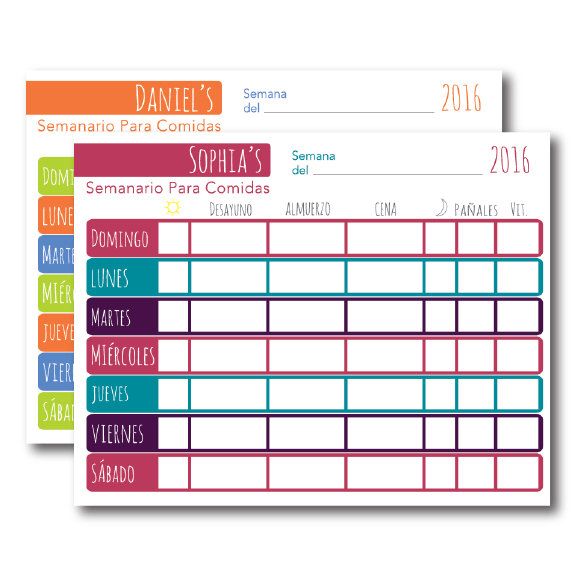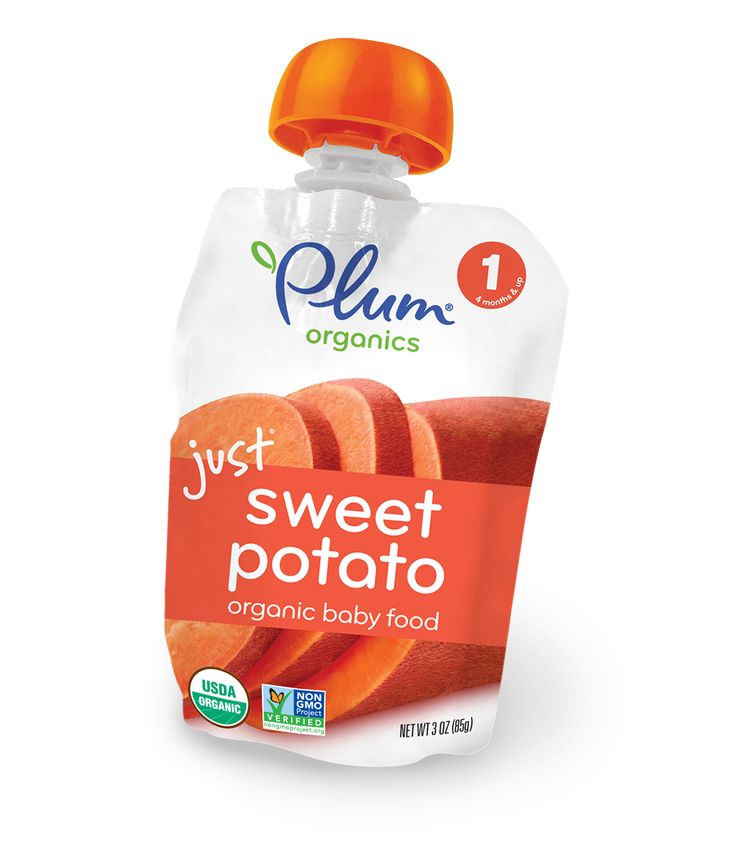Fiber rich foods for babies in india
30 High Fiber Foods for Babies and Toddlers to Feed Your Baby the Right Way
Fiber is an important nutrient that keeps our digestive system running smoothly. Here are the top healthy High Fiber Foods for Babies and Toddlers.
What is Fiber?
Health Benefits of High Fiber Foods:
30 High Fiber Foods for Babies and Toddlers
1. Oatmeal
2. Whole Grain Cereal
3. Apples
4. Pears
6. Avocado
7. Mango
8. Pineapple
9. Prunes
10. Nuts Powder
11. Carrots
12. Beetroot
13. Sweet potatoes
14. Green Peas
15. Beans
16. Leafy Greens
17. Broccoli
18. Yogurt
20. Millet
21. Berries
22. Whole-grain Bread
23. Whole-grain Pasta
24. Brown Rice
25. Barley
26. Whole Grain Cereal
27. Dried Beans
28. Pomegranate seeds
29. Corn
30. Nuts and Seeds
Frequently Asked Questions
What baby foods have the most fiber?
How can I add more fiber to my baby’s diet?
Buy Healthy Nutritious Baby, Toddler food made by our own Doctor Mom !
As parents, we try our best to plan our kids meals so they get all the nutrients they need. We focus a lot on protein, iron, calcium and healthy fats. However, one thing that often gets missed out is this – fiber. Experts across the board say that for all a healthy digestive system, you need three things – fiber, fluids and fitness. Remove any one of this and you’re in for some trouble – especially in the bathroom!
We focus a lot on protein, iron, calcium and healthy fats. However, one thing that often gets missed out is this – fiber. Experts across the board say that for all a healthy digestive system, you need three things – fiber, fluids and fitness. Remove any one of this and you’re in for some trouble – especially in the bathroom!
What is Fiber?
Fiber is the undigestible part of the plant-based food we eat, like fruits, vegetables, legumes and grains. There are two types of fiber – soluble and insoluble.
- Soluble Fiber can dissolve in water. It slows down digestion, making us feel fuller for longer. Soluble fiber is found in oats, barley, fruits and legumes like beans or peas.
- Insoluble fiber does not dissolve in water. It adds bulk to stool and pushes it through the digestive system, easing elimination from the body. Insoluble fiber is found in wheat bran and grains.
Both kinds of fiber are important for a healthy digestive system. Along with the right amount of water, it ensures easy and regular movements, while also promoting better absorption of nutrients.
Every person needs 14 grams of fiber for every 1000 calories they consume in a day. For babies, this translates to about 55 to 110 grams of soft cooked high fiber vegetables a day. For older children, this can be broken down as:
- Toddlers (1-3 years old) – 19 grams of fiber a day
- Young Children (4-8 years old) – 25 grams of fiber a day
- Older girls and teens (9-18 years old) – 26 grams of fiber a day
- Older boys (9-13 years old) – 31 grams of fiber a day
- Teen boys (14-18 years old) – 38 grams of fiber a day
If this is hard to remember, a rule of thumb is to add 10 to the child’s age (for children 5 and above). For example a 9 year old would need 19 grams of fiber a day. Ensuring 5 servings of fruits and vegetables a day also helps.
Health Benefits of High Fiber Foods:
- Keeps the digestive system working properly
- Prevents and treats constipation
- Is filling and doesn’t make the child hungry soon
- Prevents overeating and obesity
- Prevents diabetes
- Lowers bad cholesterol
- Prevents heart disease
- Lowers the risk of cancer
- Ensures absorption of nutrients
Besides these benefits, eating high fiber foods for babies and toddlers also prevents nutritional deficiencies, since most fiber-rich foods are rich in minerals vitamins and antioxidants. On the other hand, not having enough fiber can lead to several problems:
On the other hand, not having enough fiber can lead to several problems:
- Firm, hard and dry stools
- Infrequent bowel movements
- Crying when trying to pass stools
- Unwillingness to go to the toilet
- Hard and swollen abdomen
- Abdominal pain
- Low appetite
- Bleeding while pass
In severe cases, this can cause stool retention and impaction with stool leakage.
These problems can be fixed with a diet rich in high fiber foods, sufficient water intake and physical activity. A food is considered a high fiber food if it has at least 3-5 grams per serving. It can be heard to go around calculating the individual fiber content of each food, so we’ve rounded up the top high fiber foods for babies and toddler.
30 High Fiber Foods for Babies and Toddlers
List of high fiber foods for babies and toddlers
1.
OatmealOatmeal is one of the easiest ways to increase the fiber in your little one’s diet. Even babies over 6 months can have oatmeal, and it with 4 grams of fiber in a cup of cooked oatmeal, it’s an excellent choice for school going kids too! Go for organic oatmeal to get added health benefits. Try these recipes with oats for your baby:
Even babies over 6 months can have oatmeal, and it with 4 grams of fiber in a cup of cooked oatmeal, it’s an excellent choice for school going kids too! Go for organic oatmeal to get added health benefits. Try these recipes with oats for your baby:
- Organic Oats Porridge
- Banana Oats Cereal
- Oats Khichdi
- Curd Oats Khichdi
For older kids, try these:
- Oats Egg Custard
- Banana Coconut Oats Porridge
- Carrot Oats Muffins
You can find many more healthy recipes in our list of oats recipes for babies and toddlers.
2. Whole Grain Cereal
Baby cereal is a big part of a baby’s diet for the first year, so make sure you choose a cereal that’s high in fiber. Brown rice cereal, barley cereal or oats cereal are all good options. You can also try these recipes:
- Homemade Brown Rice Cereal
- Homemade Barley Cereal
- Banana Makhana Cereal
You can also make many other dishes with baby cereal, for both babies and older kids.
3. Apples
Apples are what most Moms opt for as the first fruit to feed their babies. They’re naturally sweet, easy to digest and have 3.6 grams of fiber in a small apple. With loads of benefits, apples are an excellent choice, especially when fed with the peel on for older kids. For babies, you can try these recipes:
- Apple and Cottage Cheese Puree
- Broken Wheat Apple Halwa
- Apple Ragi Porridge
Older kids will enjoy these:
- Quinoa Apple Porridge
- Apple Protein Milkshake
- Apple Whole Wheat Pancakes
You can also check out our list of healthy apple recipes for babies under one.
4.
PearsJust like apples, pears are sweet juicy and rich in fiber. A medium pair provides 5.5 grams of fiber, provided it has its skin on. Pears are also easy to feed babies and are easy to digest. You can try these pear recipes for your baby:
- Pear Puree
- Apple Pear Cinnamon Puree
5.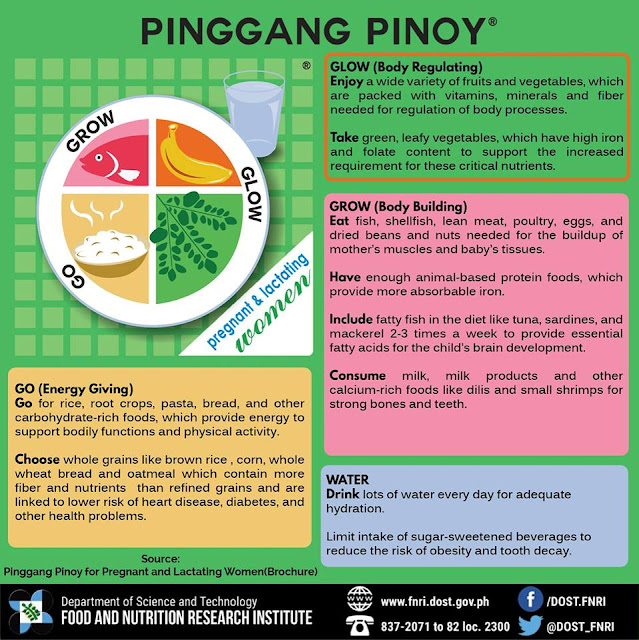 Bananas
Bananas
Bananas – the most preferred way of sweetening baby food without sugar! A medium banana packs 3.1 grams of fiber, making it one of the easiest ways of increasing your child’s fiber intake. From babies to teens, a banana is the ideal travel snack too. Try out these banana recipes for your baby:
- Banana Ghee Fry
- Strawberry Banana Puree
- Kiwi Banana Puree
- Ragi Banana Halwa
For older kids, you can try these:
- Banana Oats Pancakes
- Banana Omelette Recipe
- Barnyard Millet Banana Bread
All bananas have fiber, and raw Kerala bananas help babies gain weight too. Check out our list of healthy Kerala banana recipes.
6. Avocado
This creamy delicious fruit finds place in many recipes ranging from sweet to savory. It’s touted as a health food the world over and with good reason – half a cup of avocado has 5 full grams of fiber. Besides, they’re also rich in heart healthy fats.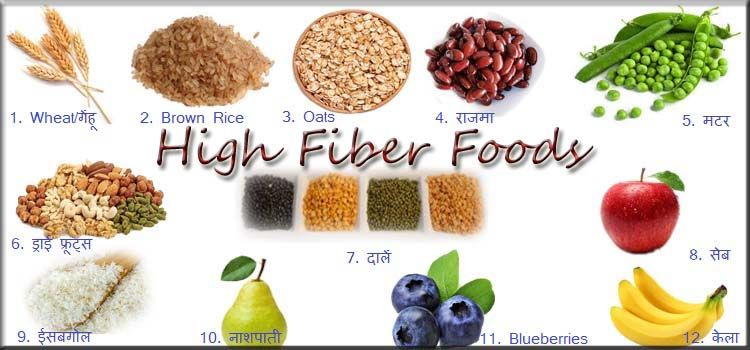 The creaminess of the fruit makes avocado ideal for babies, especially in recipes like avocado puree.
The creaminess of the fruit makes avocado ideal for babies, especially in recipes like avocado puree.
7. Mango
Mango, the king of fruits, is one of those things that kids readily eat, thanks to its juiciness and sweetness. But mango isn’t all about the taste, it’s got loads of fiber too, at nearly 3 grams a cup. While babies can munch on mango slices as finger food, you can also try these recipes:
- Easy Mango Yogurt
- Mango Puree
- Mango Cucumber Soup
Old kids will enjoy mango in these recipes:
- Mango Dates Smoothie
- Homemade Mango Kulfi
- Mango Frooti Concentrate
For more recipe ideas, check out our list of healthy mango recipes for babies and kids.
8. Pineapple
The spiky tropical fruit can be fed to babies too! On their own pineapple slices make great teething rings, especially when they’re frozen. What’s more, a cup of pineapple chunks have 2.3 grams of fiber. Besides raw pineapple, you can also try these for your baby:
- Pineapple Carrot Puree
- Pineapple Kesari
Older kids will enjoy an upside down pineapple cake as a healthy afternoon snack!
9.
 Prunes
PrunesPrunes are the number one natural remedy for constipation, and it’s understandable – with 3 grams of fiber in just quarter of a cup, this is a fiber super food! Even little babies can have prunes, both as prevention and treatment for constipation.
10. Nuts Powder
All kinds of nuts are rich sources of fiber and loads of other nutrients including healthy fats. However, nuts can prove to be a choking hazard for babies and young kids, so nuts powder is the best option. You can try either of these:
- Dry Fruits Powder
- Mixed Nuts Powder
This powder can be mixed into any recipe – it’ll only taste more delicious!
11.
CarrotsCarrots are the apples of vegetables; they’re most babies’ first veggie! Not surprising, since carrots are rich in Vitamins A and C, and also have 2.9 grams of fiber in every half cup. Carrot sticks can also be steamed and offered as finger foods. Babies will love these carrot recipes:
- Carrot Puree
- Carrot Oats Porridge
- Carrot Poha Kheer
Older children will enjoy these carrot recipes:
- Egg Carrot Chapathi Roll
- Spiced Carrot Walnut Muffins
- Carrot Cheese Paratha
12.
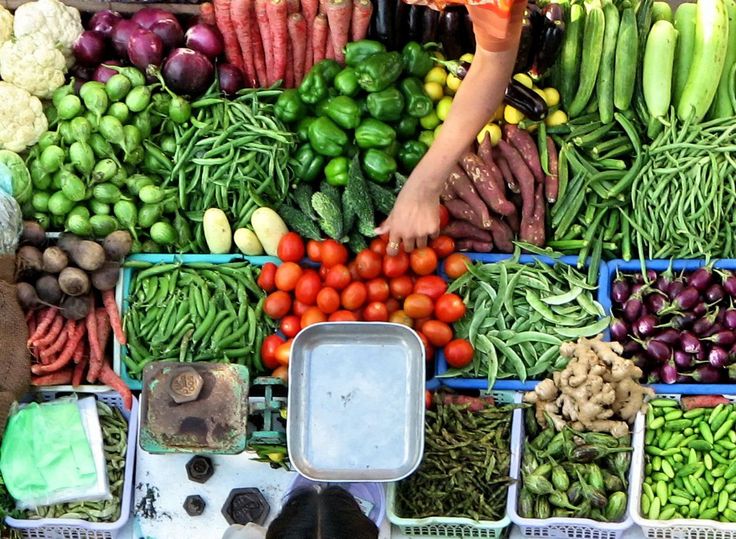 Beetroot
BeetrootBeetroots are something many children will eat if presented well, since the color itself is so attractive. Not only that, beets are packed with iron, potassium and manganese, as well as a royal 3.8 g in a cup. Try out these beetroot recipes for babies:
- Carrot Beetroot Soup
- Beetroot Chickpea Puree
- Beetroot Pearl Millet Porridge
- Beetroot Potato Pure
- Beetroot Halwa
For older kids, you can try these beetroot recipes:
- Beetroot Burger
- Beetroot Paratha
- Beetroot Rolls
- Beet Applesauce Dip
13.
Sweet potatoesPotatoes may be popular, but many of us don’t realize that sweet potatoes are just as good, maybe even better! Along with Vitamins A and C, sweet potatoes provide us with 3.8 grams of fiber per medium sweet potato. The simplest way to feed this to babies is with a sweet potato puree. Older kids will enjoy these recipes:
- Sweet Potato Dosa
- Sweet Potato Fries
- Sweet Potato Bruschetta
 Green Peas
Green PeasGreen peas are one of the most versatile vegetables available – you can easily add them to stews, soups, purees and much more! Green peas are a great source of protein, and half a cup of cooked green peas provides 4.4 grams of fiber. Babies can have peas in these recipes:
- Green Peas and Potato Puree
- Buttered Green Pea Mash
Older kids can enjoy green peas as part of these recipes:
- Quinoa Vegetable Upma
- Tofu Bhurji
Green beans are easily available, packed with nutrients and also a huge amount of fiber. Half a cup of beans contains a whopping 6-9 grams of fiber, making this a must have in your child’s diet. Babies will enjoy green beans in these recipes:
- Green Beans Puree
- Green Beans as Finger Food
16. Leafy Greens
Leafy greens are always included as part of a healthy diet, and we know that they contain loads of vitamins and iron. But did you know that greens like spinach and turnip greens also contain lots of fiber? One cup of cooked spinach contains 4.3 grams of fiber, while a cup of cooked turnip greens contains a good 5 grams! You can give your baby spinach with these recipes:
But did you know that greens like spinach and turnip greens also contain lots of fiber? One cup of cooked spinach contains 4.3 grams of fiber, while a cup of cooked turnip greens contains a good 5 grams! You can give your baby spinach with these recipes:
- Carrot Palak Puree
- Spinach Oat Pancakes
Older kids will love seeing the beautiful green color in these recipes:
- Creamy Spinach Soup
- Spinach Phulka
- Spinach Fritters
- Palak Poha Pakoda
Don’t forget to check out our list of healthy spinach recipes for babies and kids.
17. Broccoli
Broccoli isn’t something most kids eat readily, but there are ways to get kids to like broccoli. And it’s worth the effort too, considering one cup of cooked broccoli contains 5.1 grams of fiber. Broccoli can be given to babies but may cause excess gas, so introduce slowly and in small quantities, with these recipes:
- Broccoli Spinach Puree
- Broccoli Butter Puree
Older kids can try a broccoli mushroom soup. You can also check out our list on healthy broccoli recipes for babies and kids.
You can also check out our list on healthy broccoli recipes for babies and kids.
18. Yogurt
Yogurt isn’t exactly a high fiber food, but it deserves a place in this list because it contains probiotics and is crucial for a healthy gut and healthy digestion overall. Try these yogurt recipes for babies:
- Homemade Curd
- Homemade Strawberry Yogurt
- Homemade Mango Yogurt
- Coriander Curd Khichdi
- Turmeric Buttermilk
There are many ways to include yogurt in older kids’ food, like these recipes:
- Gopalkala
- Chocolate Yogurt Parfait
- Frozen Yogurt Bark
- Yogurt Fruit Parfait
- Curd Fritters
- Tricolor Fruit Parfait
- Flaxseed
Flax seeds are available in most supermarkets these days and are incredibly versatile since they can be added to anything. What’s more, a tablespoon of flax seeds contains 3 grams of fiber. For little ones, you can grind flax seed at home and sprinkle over their cooked food or into batter or dough before cooking. You can also add it to smoothies and soups.
For little ones, you can grind flax seed at home and sprinkle over their cooked food or into batter or dough before cooking. You can also add it to smoothies and soups.
20. Millet
Our grandmothers probably knew a thing or two about fiber, which is probably why millet featured so much among our traditional dishes! A 100 gram serving of millet contains a big 9 grams of fiber! And since millet can be given to babies, there are many recipes you can try:
- Multi Millet Porridge
- Beetroot Pearl Millet Porridge
- Little Millet Porridge
Older kids will love these recipes made with millet:
- Millet Kheer
- Multi Millet Paneer Paratha
- Barnyard Millet Vegetable Salad
- Millet Sathumaavu Laddu
- Pearl Millet and Green Gram Pesarattu
- Whole Grain Multi Millet Pancakes
You can get 100% natural millet preparations like Sprouted Finger Millet Flour, Millet Sathumaavu Health Mix, Organic Millet Dosa Mix, Foxtail Millet Noodles and Barnyard Millet Noodles.
21. Berries
Berries are pretty, and that may be one reason kids love them! But berries are also high in fiber, with raspberries topping the list at 4 grams in every half cup. Blueberries have 1.8 grams per half cup and strawberries have 1.5 grams fiber for half a cup. Babies will love a strawberry banana puree, while kids will love these recipes:
- Strawberry Cookies
- Strawberry Lassi
- Strawberry Banana Pancakes
- Strawberry Yogurt Muffins
You can also check out our list of healthy strawberry recipes for babies and kids.
(The foods in the list below are suitable for Children over One Year)
22. Whole-grain BreadWhite bread is made with grain that has the bran removed, which means no fiber. However, whole grain bread includes the bran and has about 2 grams of fiber a slice. So a sandwich with two slices gives you 4 grams! Here are a few recipes to try with whole grain bread:
- Homemade Whole Wheat Bread
- Hung Curd Sandwich
- Tricolor Sandwich
- Crispy Coconut Chutney Sandwich
- Paneer Sandwich
- Tricolor Bread Sushi Rolls
- Easy Bread Rolls
- Banana Coconut French Toast
23.
 Whole-grain Pasta
Whole-grain PastaJust like whole grain bread, now whole wheat pasta is also becoming increasingly available. Half a cup of cooked whole wheat pasta has 2 grams of fiber and what’s more, it is more filling than regular pasta. Combine with other high fiber veggies and you have a meal! Check out these pasta recipes for kids:
- Minestrone Soup with Pasta
- Creamy Vegetable Pasta
- Vegetable Pasta Recipe
- Indian Style Macaroni
Besides pasta, you can also check out our range of 100% natural noodles made of whole grains and millet.
24. Brown Rice
White rice has the outer covering removed, which is why it is not as filling as brown rice. A cup of brown rice has a decent 3.5 grams of fiber, and goes great with all other ingredients from vegetables to chicken! Check out these brown rice recipes for kids:
- Okra Rice
- Paneer Vegetable Fried Rice
- Coriander Vegetable Rice
- Bell Pepper Fried Rice
- Vegetable and Soya Chunks Rice
- Brown Rice Flakes Kheer
- Brown Rice Poha
- Brown Rice Cutlets
- Coconut Rice
25.
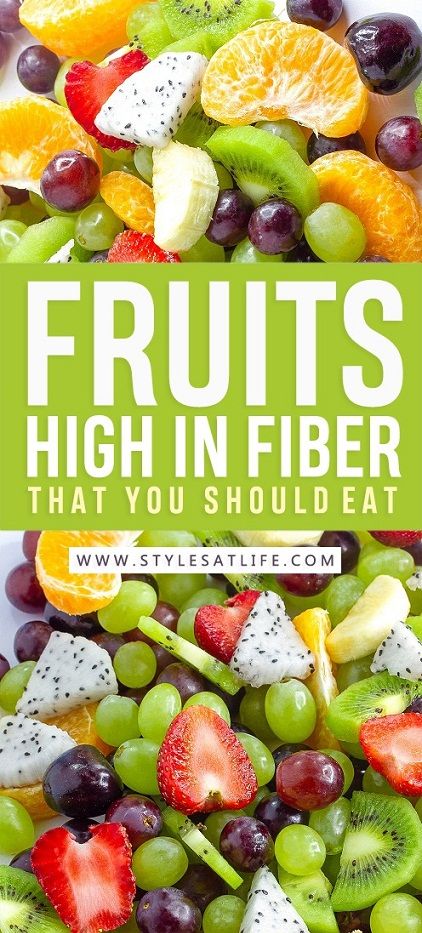 Barley
BarleyBarley has got to be the Superman of high fiber foods. With an incredible 32 grams of fiber in a cup of hulled barley, it’ll easily help taking care of your fiber needs for the day! Barley can be used in many ways, as you’ll find in our list of barley recipes for babies and kids.
26. Whole Grain Cereal
Cereal is one of the easiest things to feed kids for breakfast. After all, the only thing you need to do is serve with some milk! However, store bought cereals are notorious for being high in sugar and low on fiber. You can easily fix this with homemade cereal, which has about 9 grams of fiber in a ½ cup serving. Here are some options to try:
- Chocolate Muesli
- Fruit and Nut Granola
- Maize Flakes with Milk and Honey
27. Dried Beans
Dried beans tackle two common nutritional deficiencies in Indian kids – protein and fiber. Legumes like rajma and chana have 12-16 grams of fiber per serving, and they’re incredibly filling too! Here are some recipes you can try out with dried beans:
- Rajma Dosa
- Sprouted Moth Beans Frankie
- Rajma Veggie Quesadillas
- Rajma Sandwich
- Healthy Kidney Bean Soup
- Kid-friendly Chicken Chilli
- Chickpea Veggie Pancakes
- Roasted Chickpeas
Remember, sprouting dried beans multiplies their benefits manifold, by making their nutrients more bio-available.
Pomegranate seeds look like little jewels, and they certainly are, in terms of nutrition! These little red seeds have 3 grams of fiber in just half a cup and kids love them because of that burst of sweetness they have. Babies can try a pomegranate juice, while kids can enjoy these recipes:
- Eggless Apple Cake with Pomegranate
- Sugar Free Fruit Custard
- Sathumaavu Dahi Papdi Chaat
- Maize Flakes with Milk and Honey
- Homemade Constipation Juice
29. Corn
Corn is a popular dish with kids, probably because it is often associated with vacations and trips outside. It is one of those indulgences that are actually healthy! Half a cup of cooked corn has 1.8 grams of fiber. Here are some simple recipes to try with corn:
- Sweet Corn Fritters
- Baby Corn Fritters
- Sweet Corn Vegetable Soup
- Sweet Corn Fried Rice
- Sweet Corn Salad
- Cheese Corn Balls
30.
 Nuts and Seeds
Nuts and SeedsAlmost all nuts and seeds are packed with fiber, and that’s great because you can switch things up with a different variety. Almonds have the most fiber, with over 3 grams in a single serving while peanuts have over 2 grams. If your child has nut allergies, you can try pumpkin seeds or sunflower seeds instead. Check out these recipes with nuts you can try:
- Dates and Nuts Cooker Cake
- Homemade Peanut Butter
- Mixed Nuts and Poha Laddu
- Pistachio and Raisin Coconut Cookies
- Homemade Almond Milk
- Almond Shortbread Cookies
- Dates Almond Milkshake
- No Bake Brownies with Dry Fruit
- No Cook Dry Fruit Modak
- Dry Fruit Jaggery Energy Bars
- Dry Fruit Balls
Here are some recipes with seeds:
- Baked Ragi Crackers with Sesame Seeds
- Dates Chia Seeds and Apricot Laddu
- Dates Sesame Seeds Laddu
Tips for feeding Kids High Fiber Foods:
- Switch your regular grain with whole grain, like replacing maida with atta, or white rice with brown rice
- Make sure there is a fruit and vegetable at every meal
- Opt for whole fruits instead of fruit juice
- Add dry fruits powder or nuts powder to cooked dishes or into batter, dough or smoothies
- Add fruit, nuts and seeds to yogurt, cereal or oatmeal
- Add vegetables like lettuce to sandwiches
- Ensure kids drink enough water along with high fiber foods
Add these high fiber foods for babies and toddlers to the child’s diet gradually, increasing the quantity slowly. When introducing a new food for babies, always follow the 3-day rule. Too much fiber can cause bloating or gas as well as abdominal pain. When buying a food that claims to be high fiber, read the label carefully. Fiber is listed under ‘Total Carbohydrates’ as ‘Dietary Fiber’. A truly high fiber food should have at least 3 grams fiber per serving.
Please remember that the WHO recommends exclusive breastfeeding for the first six months, and there is no need of added fiber before that. If baby seems constipated during this time, it may help for the mother to eat some high fiber foods like prunes.
Frequently Asked Questions
What baby foods have the most fiber?
Oats, all fruits and vegetables have the most fiber in them.This article lists about 30 high fiber foods for babies.
How can I add more fiber to my baby’s diet?
Babies need about 55 to 110 grams of soft cooked high fiber vegetables a day. This article lists about 30 high fiber foods for babies.
Buy Healthy Nutritious Baby, Toddler food made by our own Doctor Mom !
Shop now!Best Fiber Rich Foods To Introduce To Your Baby
Home Baby Food & Nutrition Fibre-Rich Foods for Babies
- How Does Fibre Help Babies?
- How Much Fibre is Too Much for Babies?
- High Fibre-Foods for Babies
- Fibre-rich Food Recipes for Infants
Last Updated on
If your baby is above six months of age and has started on solids, you will want to include fibre-rich foods in his diet to ensure that his digestive system works smoothly. Fibre is an important nutrient and is necessary for a baby diet’s to keep constipation problems at bay. Read this article to know how fibre-rich foods help little ones, how much fibre your baby, needs, and more.
How Does Fibre Help Babies?
Dietary fibre is mainly of two types–soluble and insoluble fibres. Soluble fibre dissolves in water, helps regulate the digestion and keeps one baby full for longer. It is also linked to lowering the risk of obesity in kids. Insoluble fibre doesn’t dissolve in water and adds up to the baby’s stool. It is known to regulate the bowel movement in babies and makes an ideal remedy for constipation. There are many high fibre foods for baby’s constipation that can be safely added to your baby’s diet like prunes, pears, plums, etc.
How Much Fibre is Too Much for Babies?
Although there is no particular recommendation of the amount of fibre for babies, according to the report by the US Department of Agriculture, babies need about 14 grams of dietary fibre for every 1000 calories consumed. For children between the ages of 1 and 3 years, 19 grams of fibre is necessary on a daily basis.
Ensure that you do not give your baby too much fibre as it may also lead to diarrhoea.
High Fibre-Foods for Babies
Before you introduce fibre in your baby’s diet, always consult a paediatrician to seek approval and know of any foods that you need to avoid. Once the doctor approves you can choose a range of high fibre fruits and vegetables for babies and start adding it to their diet gradually.
1. Vegetables
Vegetable fibre can be started on immediately after you wean your baby off breast milk or formula, around six to seven months of age. The best way to introduce vegetables to a baby is to serve them in a mashed or pureed form. As your baby begins teething, you can give him sautéed vegetables or salads. Some of the vegetables that are rich in fibre are:
- Spinach
- Broccoli
- Beans
- Peas
- Turnip greens
- Brussels sprouts
- Sweet potatoes
- Parsnips
- Raw carrots
2. Fruits
Fruits are a rich source of fibre and can be safely introduced to your baby. Ensure to let your baby try only one fruit at a time and notice how his body reacts to it. If he feels any discomfort, discontinue it and try a different fruit. Some fruits that are rich in fibre include:
If he feels any discomfort, discontinue it and try a different fruit. Some fruits that are rich in fibre include:
- Apples
- Bananas
- Prunes
- Plums
- Apricots
- Pears
- Peaches
3. Grains
It is best to offer single-grain cereals to your baby in the beginning. However, your baby may not be a fan of the taste and may take some time to get used to it. The best way to figure out which grains are high in fibre is by checking the texture of the food. The grainier the texture, the higher the fibre content. Some grains that are good for the baby are:
- Rice
- Oats
- Barley
- Wheat
- Lentils
- Chickpeas
Once your baby starts teething, you can also give him whole grain pasta, bread, and Graham crackers.
Fibre-rich Food Recipes for Infants
You can try out these quick recipes that can add a good amount of fibre in your child’s diet.
1. Hummus Dip With Toast Recipe
Hummus is both delicious and rich in fibre. Here is an easy recipe for a hummus dip that goes well with toast. You can make this dish for your child if he is above 2 years of age.
Here is an easy recipe for a hummus dip that goes well with toast. You can make this dish for your child if he is above 2 years of age.
What You Need
- Chickpeas, 400 g, drained and rinsed
- One lemon
- One clove of garlic
- Tahini (sesame paste), 2 tablespoons
- 2 tablespoons of olive oil
- 2 tablespoons of water
How to Prepare:
- Blend all the ingredients together until they form a smooth paste.
- Add water as needed for the required consistency.
2. Frozen Pineapple Recipe
This is the simplest way to increase your child’s fibre intake and requires little to no time. You can make this for your child if he is above 2 years of age.
What You Need
- Pineapple – 1 (small)
How to Prepare
- Cut the pineapple into thin round slices and refrigerate them for your baby to chew on.
Fibre-rich foods are important for proper bowel function and when given in the right quantity can complement your baby’s diet.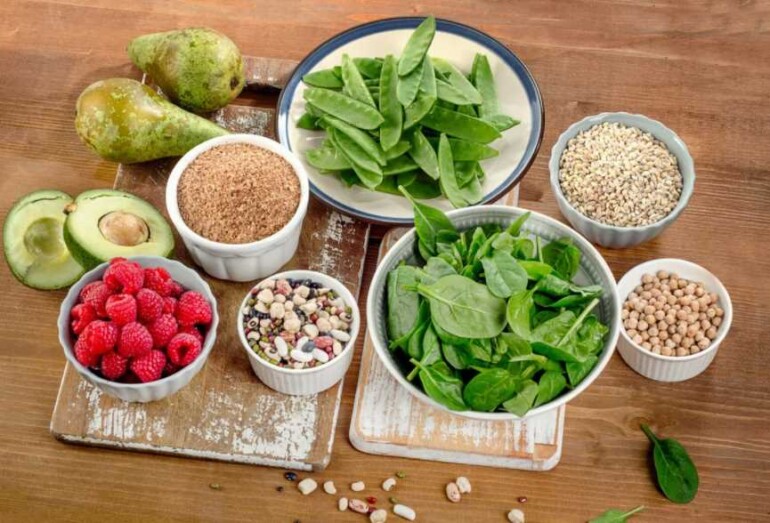 But before including any fibre-rich food in your little one’s diet, do check with your baby’s paediatrician whether or not you should go ahead with it.
But before including any fibre-rich food in your little one’s diet, do check with your baby’s paediatrician whether or not you should go ahead with it.
Also Read: Raisin Consumption in Babies
- TAGS
- Food
Previous articleHow to Be a Good Father
Next articleCauses of Infertility in Males & Females
ADVERTISEMENT
POPULAR POSTS
ADVERTISEMENT
LATEST
What Do Breastfeeding Moms Really Want?
Ruchelle Fernandes -
Hands up if you thought breastfeeding would be easy – but then struggled! To mark World Breastfeeding Week in August this year, Australian breastfeeding...
Foods rich in fiber
We have heard many times from doctors, nutritionists, popular TV presenters and all-knowing girlfriends about the magic word "fiber", which is able to cleanse our body of toxins and toxins.
What is this miracle? In fact, it is correct to talk not about fiber, but about dietary fiber. Dietary fibers are complex carbohydrates that are not digested in the human gastrointestinal tract. More precisely, human digestive enzymes are not able to digest it, but the beneficial intestinal microflora is quite capable of this task.
All dietary fiber contained in food is usually divided into six types: cellulose, fiber, hemicellulose, pectins, lignin and the so-called mucus and gums. I draw your attention to the fact that according to the information available on the Internet it is impossible to establish how much fiber is in a particular product, and how much gum, cellulose or pectin.
It is possible that reference books have been compiled on this topic for narrow specialists in the food industry or physicians, but no one has provided them for general use of the network, by and large, the information available is very approximate and not always reliable. But it is very important what kind of dietary fiber is contained in the food on our table. And that's why. Dietary fibers differ in composition and in their properties.
But it is very important what kind of dietary fiber is contained in the food on our table. And that's why. Dietary fibers differ in composition and in their properties.
All of them are classified by water solubility into:
water-soluble: pectin, gums, mucus, starch - it is believed that they better remove heavy metals, toxic substances, radioisotopes, cholesterol.
water-insoluble: cellulose (fiber), lignin - these retain water better, contributing to the formation of a soft elastic mass in the intestines and improving its excretion.
Roughly speaking, fiber is the shell of plant cells, and pectins are the substance that binds plant cells together. Physiologically, the difference is felt, this is how - if there is more pectin in the foods consumed, then the time of digestion of food is delayed. If there is more fiber (cellulose), it is shortened. Anyone who has ever suffered from constipation will understand what I mean.
The names speak for themselves - coarse dietary fiber (fiber) and soft dietary fiber (pectin).
For even greater clarity, I will give an example: an apple. Beautiful, juicy, healthy and other blah blah. Let's turn to the numbers: 100 g of the edible part of apples contains 0.6 g of fiber, 1 g of pectin (averaged). As you can see, fiber is almost two times less than pectin. Therefore, some people who are prone to constipation, due to the physiological structure of the intestines (dolichosigma, extra intestinal loops, etc. pathologies that are detected during colonoscopy or irrigography), after they eat a lot of apples, especially after cutting the peel, will wait for the urge to visit toilet room even longer than without apples. Now, if they ate one peel, they would get the effect - after all, cellulose (fiber) is found mainly in the peel, and pectin in the pulp.
Many mothers faced a problem: after the introduction of apples into complementary foods, babies began to hold stool. But to most people, the phrase "apples and constipation" seems wild and awkward. Well, after all, apples are solid fiber! Why doesn't she work? And try to give zucchini puree or carrot juice and the stool will improve.
Well, after all, apples are solid fiber! Why doesn't she work? And try to give zucchini puree or carrot juice and the stool will improve.
What dietary fiber is for
Water-soluble dietary fiber: gums and pectin bind to bile acids in the intestines (form a gelatinous mass in the stomach), thereby reducing fat absorption and lowering cholesterol levels. In general, they delay the process of moving food through the gastrointestinal tract, envelop the intestines, protecting it if it has ulcers and erosion. Therefore, on a diet with diseases of the gastrointestinal tract, with cholecystitis, enterocolitis, it is useful to eat not raw fruits, but baked ones with the skin removed. In addition, gums and pectin slow down the absorption of sugar after meals, which is useful for diabetics.
Water-insoluble dietary fiber: cellulose (fiber) and lignin bind water in the intestines, thereby giving volume to the "gastrointestinal tract waste", contribute to faster bowel emptying, which is the prevention of such consequences of constipation as spasmodic colitis, hemorrhoids, colon cancer, varicose dilatation of the veins of the rectum.
In the instructions for dietary fiber sold in a pharmacy, you can find out that they bind xenobiotics, heavy metals, radioactive isotopes, ammonia, divalent cations and contribute to their excretion from the body. In fact, they have an enterosorbing, detoxifying, antioxidant effect.
But it is wrong to comb all dietary fiber under the name "fiber". For people who do not have digestive problems, and the gastrointestinal tract works like a clock, an extra intake of some dietary fibers, namely fiber, threatens with diarrhea and flatulence.
How much dietary fiber a person needs
Nutritionists in most countries believe that a person simply needs ballast substances in the form of dietary fiber. Here are just a consensus on how much is in grams - no. The American Dietetic Association has set a target of 25-30 grams of fiber per day. Russian nutritionists recommend 20-25 g of fiber per day. This is an indicator for the average person, without physiological abnormalities.
In case of any diseases, the doctor can correct the norm. So, in some cases, the amount of dietary fiber, and in particular coarse (fiber), can be increased to 40 g per day (in sports medicine, recommendations are from 35 to 50 g of fiber per day). Or vice versa, it is reduced, although in most cases, if you write down the diet of an ordinary person (non-vegetarian) according to nutritional value, then 15-17 g of fiber per day is gained from strength - too much refined food in our life.
The recommended dose of pectin for the general population is 4 g per day for adults and 2 g for children. With an increased radioactive background, the pectin rate should be increased to 15 g per day. An excess of pectin in the body can cause allergic reactions, fermentation in the colon, accompanied by flatulence and a decrease in the digestibility of proteins and fats. Have I already mentioned that dietary fiber is found only in plant foods? No, well, you guessed it. But the content of dietary fiber, or rather pectins and fiber, varies greatly.
Foods containing dietary fiber
Vegetables
| Foods | Pectins | Fiber | Total Carbs |
| Eggplant | 0.4 | 2.5-3.3 | 5.5-7 |
| Zucchini | 0.8-1 | 1 | 3.5-5 |
| White cabbage | 0.1-0.6 | 2 | 6.5-6.7 |
| Cauliflower | 0.6 | 2.3-2.7 | 6.3-6.5 |
| Potato | 0.5 | 0.8-2 | 13-26 |
| Onion | 0. 4 4 | 2.8-3 | 8.2-11 |
| Carrot | 0.6-0.8 | 2.5-3.5 | 9.6-11 |
| Beetroot | 0.8-1.4 | 0.9-2.5 | 10.8-11.5 |
| Cucumbers | 0.4 | 0.8-1.1 | 3-3.5 |
| Squash | 0.3 | 0.9-1.3 | 3.8-4.1 |
| Sweet pepper | 0.3 | 1.5-2 | 4,-8.5 |
| Radish | 0.3 | 1.6 | 3.8-5 |
| Pumpkin | 0.3 | 0. 5-2 5-2 | 5.8-6.5 |
| Tomatoes | 0.3 | 1.4 | 3.8-5 |
Berries and fruits
| Products | Pectins | Fiber | Total Carbs |
| Apricots | 0.4-1.3 | 2 | 11.1 |
| Quince | 0.5-1.1 | 3.5 | 13.2 |
| Avocado | 0.1 | 5.5-6.7 | 7.5-8.5 |
| Pineapple | 0.1 | 1.2 | 13 |
| Oranges | 0. 6-0.9 6-0.9 | 1.5-2 | 11.5-11.8 |
| Watermelon | 0.05 | 0.4 | 8 |
| Banana | 0.9 | 2.6 | 23 |
| Cherry | 0.2-0.8 | 1.8 | 12.2 |
| Grapes | 0.6 | 0.6-0.9 | 17.2 |
| Garnet | 0.01 | 4 | 18.2 |
| Grapefruit | 0.5 | 1.1 | 8.4 |
| Pear | 0.8-1 | 3.1 | 15.5 |
| Melon | 0. 4 4 | 0.9 | 8.3 |
| Strawberry | 0.5-1.4 | 1.4-2.2 | 9.7-10.5 |
| Raisin | 1.6 | 3.8 | 78-79 |
| Dried figs | 5.5-6 | 9.8-10 | 64-64.5 |
| Kiwi | 0.3 | 3 | 14.5-14.7 |
| Dogwood | 0.6-0.7 | 1.1-2 | 12-17 |
| Strawberry | 0.7 | 1.4-2.2 | 9.7-10.5 |
| Cranberry | 0.5-1.3 | 4. 6 6 | 12-12.2 |
| Gooseberry | 0.7-0.9 | 3.5 | 11-12.5 |
| Dried apricots | 1.5-2 | 7.3-7.5 | 51-62 |
| Lemon pulp | 0.5-0.7 | 1.1-1.2 | 9.3-9.5 |
| Lemon zest | 1.9-2.5 | 10-10.6 | 16 |
| Raspberry | 0.3-0.7 | 6.5 | 12 |
| Tangerines | 0.4-1.1 | 1.8 | 13.4 |
| Plum | 0.9-1.5 | 1.4-1.6 | 11. 4-11.8 4-11.8 |
| Redcurrant | 0.4-0.7 | 4.1-4.3 | 13.5-13.8 |
| Blackcurrant | 6-6.5 | 4.5-4.8 | 15.4 |
| Sea buckthorn | 2.3-2.6 | 2 | 7.8 |
| Peach | 0.7-1.2 | 1.5 | 9.7-10 |
| Pomelo peel | 6.8-5 | 10 | 25 |
| Dates | 2.2-2.5 | 8 | 75-80 |
| Persimmon | 1.5 | 1.5-3.5 | 17 |
| Cherry | 0.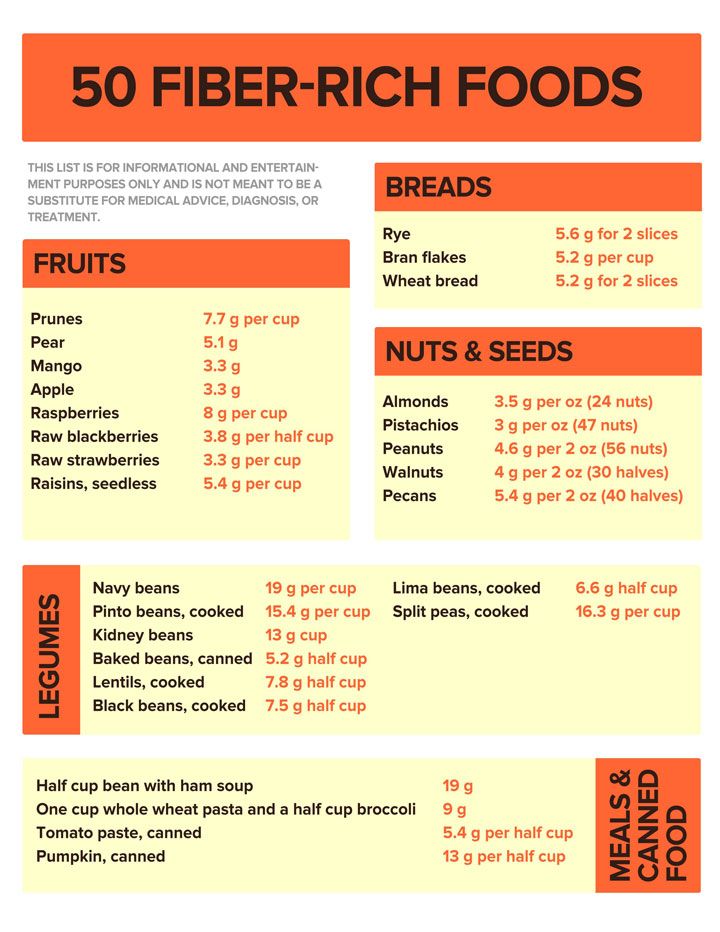 4-0.6 4-0.6 | 2.1 | 16 |
| Prunes | 1-1.5 | 7 | 64 |
| Apples | 0.9-1.7 | 1.5-2.4 | 13.5-13.8 |
Cereals, grains and legumes
| Products | Pectins | Fiber | Total Carbs |
| Buckwheat | 0.8-1 | 8.8 | 56-70 |
| Peas | 0.6 | 23-25.5 | 49.5-60 |
| Corn | 0.5 | 2-4 | 70-74 |
| White chickpeas (kabuli) | 2. 7 7 | 1.2-2 | 65-71 |
| Brown chickpeas (desi) | 2 | 4-6 | 51-65 |
| Soft wheat | 0.5 | 2.3-2.7 | 70-71 |
| Durum wheat | 0.7 | 10-10.8 | 71-71.5 |
| Millet | 0.7 | 13.7-14.3 | 66-72 |
| Oats | 7.7-7.8 | 10-12 | 66-67 |
| Long grain white rice | 1 | 1.7-2.2 | 79-80 |
| Round white rice | 0.9 | 2. 8 8 | 77-79 |
| Brown rice | 1.8 | 3.3-3.5 | 76-77 |
| Wild rice | 1.4 | 6-6.2 | 74-74.5 |
| Rye | 7.9 | 14.6-15.1 | 69-75 |
| Soya (beans) | 0.05-0.1 | 9-13.5 | 30-30.5 |
| Barley | 0.5-1.2 | 14.5-16.5 | 74.5-76.5 |
| Beans (dry beans) | 0.4-0.5 | 20-24 | 59-60 |
| Dry lentils | 1.5-3.3 | 7.2 | 60 |
Nuts and seeds
| Products | Pectins | Fiber | Total Carbs |
| Peanuts | 4 | 8 | 16-17. 5 5 |
| Brazil Walnut | 0.2 | 6.5-7.5 | 12-12.3 |
| Walnut | 0.8 | 6.5 | 13.5-13.7 |
| Pine nut | 0.15 | 3.5-3.7 | 13-13.1 |
| Cashew | 0.2 | 3.3-3.6 | 32.7-33 |
| Sesame | 0.4 | 5.5-11.2 | 23-23.4 |
| Flaxseed | 1.8-3.3 | 24-25.5 | 28.9 |
| Mac | 0.5 | 19.5 | 28.1 |
| Almond | 0.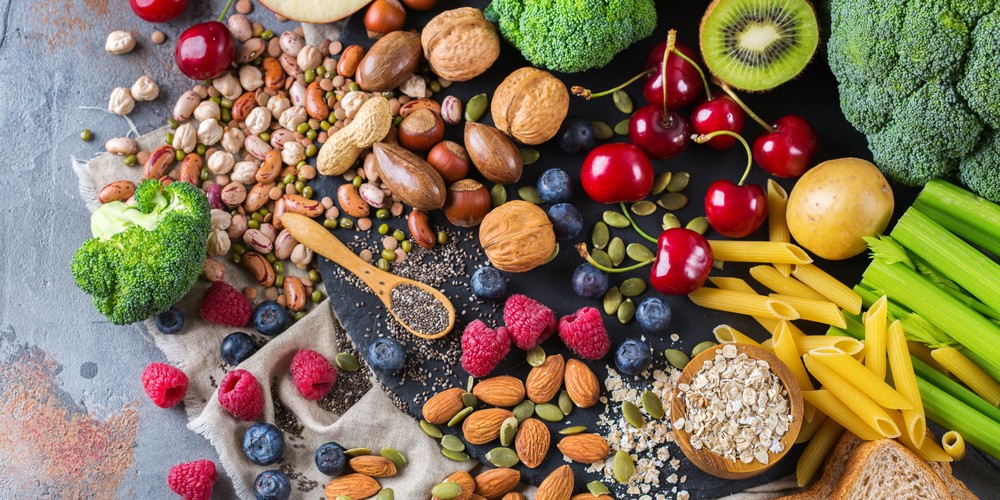 2 2 | 12.2 | 21.7 |
| Sunflower seeds | 0.8-1.9 | 13-16 | 20 |
| Pumpkin seeds | 0.3 | 6-13 | 10.5-11 |
| Pistachios | 0.4 | 10 | 27.5-28 |
| Hazelnut | 0.3 | 11 | 17 |
The amount of pectin may vary for various reasons. The first is the varietal qualities of fruits and vegetables. More clearly on pears, remember how different they are - with a thin peel (conference pear), with a thick one (Chinese pears). In addition, during storage, the amount of pectin in fruits decreases, so it is more beneficial to eat fresh fruits and vegetables.
The amount of fiber also varies depending on the variety, as can be clearly seen in the currently popular chickpea. There are two types on sale: white chick-pea desi is yellow, dry dirty yellow or gray and brown chick-pea kabuli (popular in India) is dark brown, dry almost black. The content of pectins and fiber, as well as the total carbohydrate content (starch is almost 1.5 times more in white chickpeas) is very different. In addition, the amount of dietary fiber and total carbohydrate content depends on whether you use shelled or unshelled chickpeas in your meals. I collected this article literally bit by bit from reference books, not only Russian ones, for example, “Dietary fiber profile of food legumes” by Sarhad J. Agric. Vol. 23, no. 3, 2007.
By the way, in addition to pectins and fiber, some products contain other dietary fibers - mucus - substances of various chemical composition, mainly polysaccharides, but close to pectins. They selectively absorb other harmful substances in the intestines, reducing putrefactive processes in it, promote healing of its mucous membrane and removal of excess cholesterol from the body. Their source is, first of all, linseed (6-12%), mucus is also present in rye grain.
Their source is, first of all, linseed (6-12%), mucus is also present in rye grain.
To summarize: are richest in fiber, and dietary fiber in general, primarily legumes, nuts and seeds, especially flaxseed, whole grain flour, then vegetables (especially onions, carrots and beets), fruits (especially avocados, dried fruits) and berries (especially cranberries, raspberries, black currants). Moreover, fruits have the highest content of dietary fiber in the peel.
Do not discount some spices, such as cinnamon. It is very rich in dietary fiber. I could not find information on how much pectin is in it, and how much fiber, it is only known that the total amount of dietary fiber is 53 g per 100 g, which is more than half. So cinnamon enriches pastries not only in taste, but also structurally.
How much and what to eat to get enough fiber
To gain the required amount of fiber 25-35 g, you need to eat a lot of vegetables and fruits, for example, 1 kg of apples or 1 kg of pears, or 1 kg of carrots, or 1 kg of cabbage or 1 kg of pumpkin, 1.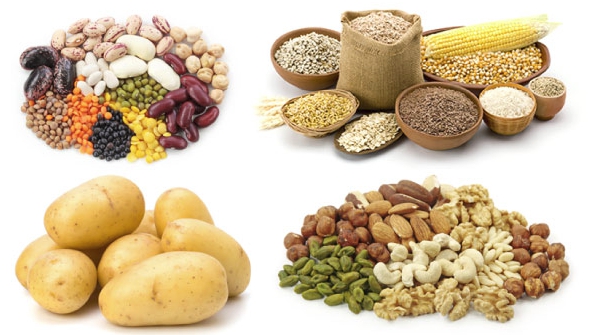 5 kg of apricots, or 2 kg of melon. You can overeat with berries - just half a kilo of currants! But you don't eat that much every day.
5 kg of apricots, or 2 kg of melon. You can overeat with berries - just half a kilo of currants! But you don't eat that much every day.
One of the main suppliers of dietary fiber is bread - rye (8.3 g fiber per 100 g of bread), grain (8 g fiber), doctor's bun (with bran - 13 g fiber), cereals (oatmeal - oatmeal, buckwheat - 10-11 g of fiber). But count how much bread you eat? A slice of bread weighs 20-30 g, one large plate of oatmeal - only 40 g of cereal. A large bowl of buckwheat contains only 8 grams of fiber.
Children especially lack dietary fiber, in particular fiber, it is difficult to force them to eat vegetable salads, whole grain bread, legumes. Save nuts and dried fruits.
If you reconsider your diet and start eating more foods rich in fiber, one not entirely pleasant moment appears - an increase in the amount of carbohydrates or fats and total calories. The fact is that in fruits and dried fruits, for example, in addition to dietary fiber, there are a lot of sugars, in nuts - fats.
In the same apples, in addition to pectin and fiber, 10 g of sugars for every 100 g of weight, in prunes - 38 g of sugar. The norm of carbohydrates for a person averages 250-450 g (depending on weight and physical activity). The same is true with nuts and seeds - you can sort out fats, the norm of which is about 40-50 g per day.
I tried to make a daily diet for the day, from the most common products, so as to more or less bring it closer to the norm. To be honest, it's not that easy! Do not judge strictly, an approximate variant for the day, which should be divided into 5-6 meals:
- 120 g (5-6 slices) rye bread,
- 200 g cottage cheese 5%,
- 200 g boiled long grain rice,
- 200g boiled pasta,
- 100 g boiled chicken fillet,
- 200 g baked pink salmon without oil,
- 200 g fresh cucumber (1 cucumber),
- 150 g fresh tomato (1 small),
- 10 g vegetable oil (tablespoon),
- 100 g tangerine (2 small),
- 500 g apples (2 large or 3 medium),
- 60 g sugar (10 tsp with tea or coffee),
- 20 pieces (20 g) almonds.

Total: 130 g of protein, 44.6 g of fat, 275 g of carbohydrates, of which 39 g of dietary fiber, total 2054 kcal. Calculated for a person with an energy requirement of 2000 calories (+/- 50), engaged in amateur strength training 3 times a week, not striving to lose weight. You can replace vegetable oil with butter by adding it to the side dish, then you will have to eat vegetables raw so as not to go overboard with fats and calories.
Diet option: remove all apples from the above list, add a plate of boiled lentils (200 g) and get: 140 g of proteins, 43 g of fat, 210 g of carbohydrates, of which 39 g of dietary fiber, total 1811 kcal - more fitness option - A slight calorie deficit and fewer carbs will help you shed some fat.
Another variant of the diet: completely remove sugar, replace it with 100 g of prunes (1 piece weighs 8-10 g without a stone), then the hated lentils can be replaced with a portion of 300 g baked in spices (without oil or with a drop of oil) potatoes . We get: 134 g of proteins, 44 g of fats, 224 g of carbohydrates, of which 38.6 g of dietary fiber, total 1849kcal.
We get: 134 g of proteins, 44 g of fats, 224 g of carbohydrates, of which 38.6 g of dietary fiber, total 1849kcal.
Sometimes there are cases when there is no desire or opportunity to eat vegetables and fruits. Most often, this is in the process of losing weight. Carbohydrates (sometimes fats) are cut here. And they are cut down very much - less than 100 g per day. But then the intake of dietary fiber is very sharply reduced, literally up to 2-4 g. This threatens with a serious violation of the regularity of the "stool". In such cases, special foods with a high fiber content come to the rescue: wheat bran, oatmeal, rye (25-55 g fiber), flax flour (25 g fiber), soy flour (14 g fiber).
But, perhaps, each of these products should be devoted to a separate article ...
Bran and fiber - composition and benefits for the body
What is fiber
Fiber - plant fibers from which the entire "skeleton" of the plant is built. Just like the human skeleton, on which the whole body rests, in the plant, fiber is this dense material on which everything is attached and held. Another name for fiber is indigestible dietary fiber.
Another name for fiber is indigestible dietary fiber.
Conclusion: fiber is found in all plants.
Knowing how fiber affects the health and body of a person, you can increase or decrease the intake of fiber. To do this, you need to know where there is a lot of fiber, and where there is little.
The benefits of fiber
Fiber is a coarse fiber, it is not digested by enzymes in the digestive tract, it comes out unchanged.
Fiber does a lot of work as it passes through the digestive tract. The main merit of fiber is that it creates the effect of a “brush”, mechanically stimulating the intestines and cleans it. Fiber also creates volume in food without adding calories. For this, she is valued in diets for weight loss.
Therefore fiber is essential for proper digestion. Fiber is also important for weight management, sugar regulation and blood cholesterol levels.
On average, a person's daily requirement for fiber ranges from 25 to 35 g. The body has nothing to digest. That's why she comes out undigested. But on the other hand, passing through the gastrointestinal tract, it cleans it like a rough brush.
The body has nothing to digest. That's why she comes out undigested. But on the other hand, passing through the gastrointestinal tract, it cleans it like a rough brush.
What foods contain fiber
As we understand, fiber is found in all plant foods. What fiber has the most?
First of all, it is worth noting the peel of vegetables and fruits, beans, herbs, nuts, seeds.
Foods rich in fiber:
- Rye
- Wheat
- Whole grain rice
- Apple peel
- Cabbage
- Carrot
- Beets.
- Cocoa powder
- Flaxseed
- Mushrooms
- Rye bran
- Rosehip
- Sesame
- Peas
- Nuts.
What is bran
Bran is the outer layer of the grain, which contains nutrients and fiber. In the process of processing cereals, it is customary to get rid of this layer. This is done in order to increase the shelf life of the resulting product. The fact is that cereals that are not processed in this way deteriorate faster and become bitter in taste.
This is done in order to increase the shelf life of the resulting product. The fact is that cereals that are not processed in this way deteriorate faster and become bitter in taste.
Benefits of bran
Bran of various cereals has various beneficial properties: flaxseed contains more protein, rice is rich in valuable fats, wheat has a lot of vitamin B, and amaranth has iron and phosphorus.
However, there are a number of common properties that are characteristic of all types of bran without exception. And the main one is the effect on the state of the gastrointestinal tract.
There are 3 main functions of bran:
- Improvement of digestion;
- Hunger suppression, weight control;
- Purification of the body.
Composition of bran
It is hard not to recognize the value of a product that contains so many trace elements, antioxidants, essential fatty acids, proteins and slow carbohydrates. The chemical composition of different types of bran can vary significantly, but almost all bran contains the following substances to one degree or another:
The chemical composition of different types of bran can vary significantly, but almost all bran contains the following substances to one degree or another:
- Vitamins of group B, as well as A, E and PP
- Calcium
- Potassium
- Phosphorus
- Iron
- Copper
- Manganese
- Zinc
- Selenium.
Types of bran
The most common classification of bran is by type of cereal. In this context, it is customary to distinguish the following species:
- Rye
- Buckwheat
- Wheat
- Corn
- Oat
- Linen
- Rice
- Amaranth
- Barley.
Bran varies greatly in calories. The most "light" can be called rye (just over 100 kcal), the most nutritious are barley (over 400 kcal per 100 g).
Bran and fiber: common and differences
Summing up, it is worth noting what still unites bran and fiber, and what are their main differences.
Bran is the outer shell of the grain, consisting of a soft part and coarse fiber (70-75%).
Fiber is the coarse fibers of plants.
Differences and commonality
| Bran | Fiber |
| This is the coarse fibers + the digestible soft part of the grain | These are coarse fibers |
| The term applies only to cereals | The term applies to all plants |
| Caloric | 0 calories |
| Digested | Not digestible |
| Helps the proper functioning of the digestive tract | |
| Pledge of proper nutrition | |
| By-product of plant processing | |
| Should be cheap | |
The composition and benefits of bran and fiber on the example of rice grain.



